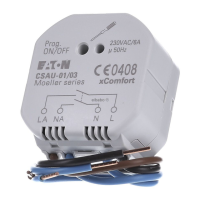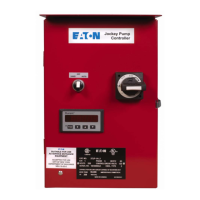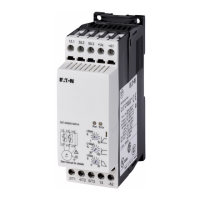2 Installation
2.7 Lighting protection
42 Modular PLCs XControl: XC-104-…, XC-204-…, XC-303-… 01/23 MN050005EN Eaton.com
2.6.1 Cable routing and wiring
Cables are divided into the following categories:
• Electric power lines (e.g. power cables carrying high currents, or lines to
current converters, contactors, solenoid valves),
• Control and signal cables (e.g. digital input cables),
• Measurement and signal cables (e.g. fieldbus cables).
Take care to implement proper cable routing both inside and outside the con-
trol panel, to keep interference as low as possible:
▶ Avoid parallel routing of sections of cable in different power categories.
▶ As a basis rule, keep AC cable separated from DC cables.
▶ Keep to the following minimum clearance:
• at least 10 cm between power cables and signal cables;
• at least 30 cm between power cables and data or analog cables.
▶ When routing cables, make sure that the outgoing and return leads of a
circuit pair are routed together. The opposing currents on this cable pair
cause the sum of all currents to equal zero. The generated electromag-
netic fields cancel each other out.
2.6.2 Suppressor circuit for interference sources
▶ Connect all suppressor circuits as close to the source of interference
(contactors, relays, solenoids) as possible.
2.6.3 Screen earth kit
▶ Use shielded cables for the connections to the data interfaces.
The general rule is:
the lower the coupling impedance, the better the shielding effect.
2.7 Lighting protection
2.7.1 External lightning protection
All cables between buildings must be shielded. Metal conduits are recom-
mended for use here. Fit signal cables with overvoltage protection, such as
varistors or other surge arresters. Implement these measures ideally where
the cable enters the building and at least at the control panel.
→
Always route power cables and signal cables as far apart as pos-
sible. This avoids capacitive and inductive coupling.
If separate cable routing is not possible, then the first priority
must be to shield the cable responsible for the interference.
→
Switched reactors should always have suppressor circuitry
fitted.

